The Trail-barrow is one of our most helpful trail-building tools. Without it, we would have been caught on the mountain, missing the necessary tools to build trails, and unable overcome many obstacles. It was the brainchild of Jesse Amundsen (@lesdnumaj).
To build a Trail-barrow, use an unassembled wheelbarrow kit, and instead of assembling the metal wheelbarrow tray, replace it with a plastic bin to house the smaller tools. On the outside of the bin, affix two sections sections of 2″ PVC by bolting it with large washers to the bin. These PVC sleeves will hold your 7″ Rogue Hoe and your metal rack.
Next, cut four slits on each side underneath the PVC sleeves to thread the 8″ velcro webbing. This webbing is used to attach the flat shovel and the 7″ Rogue Hoe on either side.
What's Inside?
The Trail-barrow was very useful and highly recommended for trail building. It keeps everything within reach reach, and it advances with you as you move down the trail. It’s not bear-proof, but we found that an adult black bear couldn’t break it, although he (or she) did toss it about pretty good.
Outside the Trail-barrow
The main tools are stored on the outside of the tool bin. The Rogue Hoe and Flat Shovel are secured to the outside of the tool bin with the velcro closure straps. The Pulaski and the metal rack will slide into the 2″ PVC sleeves.


7" Rogue Hoe
This is hands-down the most essential tool to take into the woods. You can cut a trail, remove stumps, cut roots, and grade and tamp a finished singletrack trail bed.
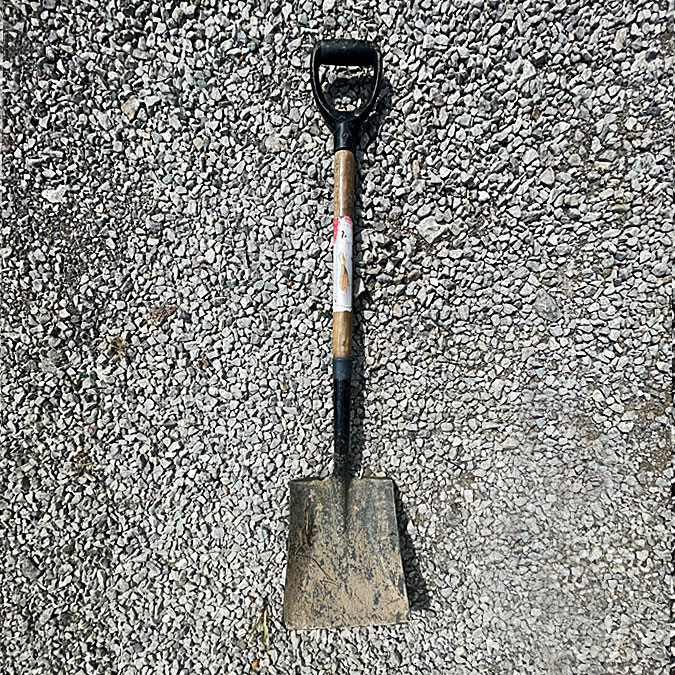
Flat Shovel
A flat shovel is used to remove extra material, but most importantly, to tamp the finished trail so it is firm, erosion-resistant, and ready to ride.
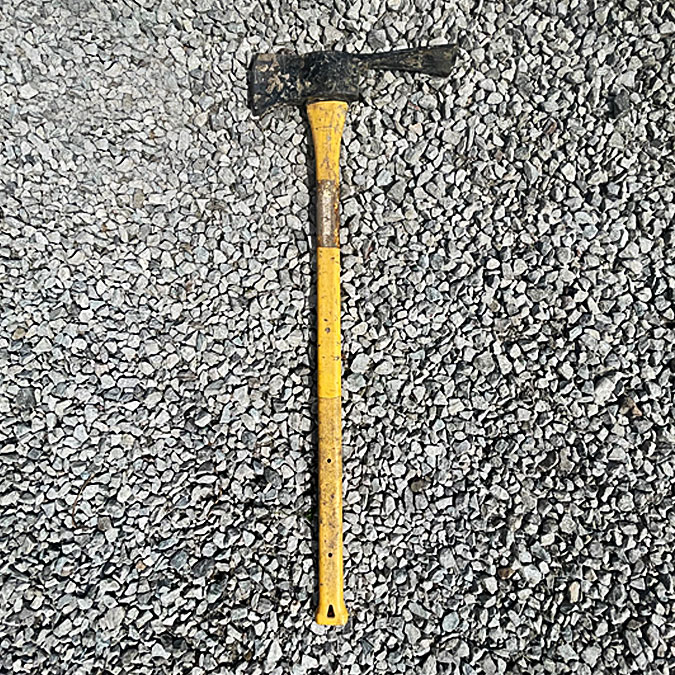
Pulaski
The Pulaski is a stump-removing beast. It is a must. If stumps are giving you trouble, put them under some tension to help cut through the stubborn roots.
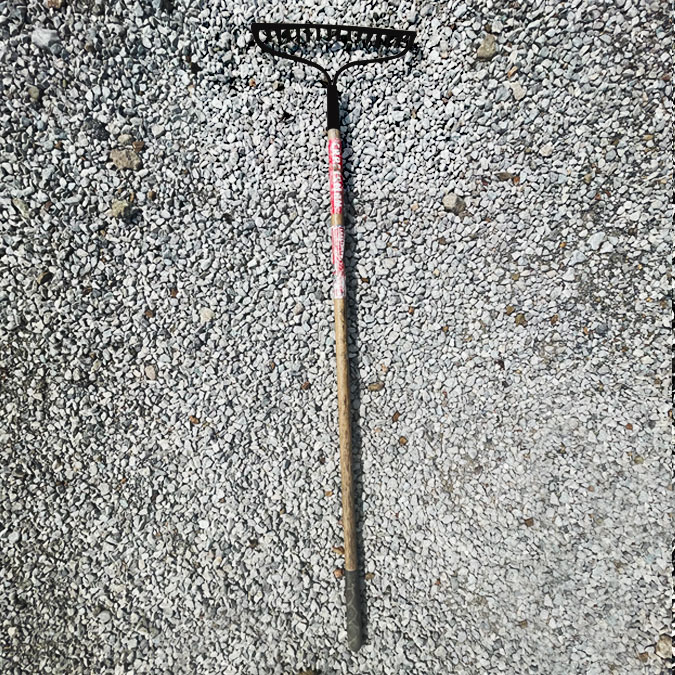
Metal Rake
This tool is used for grading the trail before tamping it firm. It'll also remove small rocks from the soil during the process to provide a smooth, ridable surface.
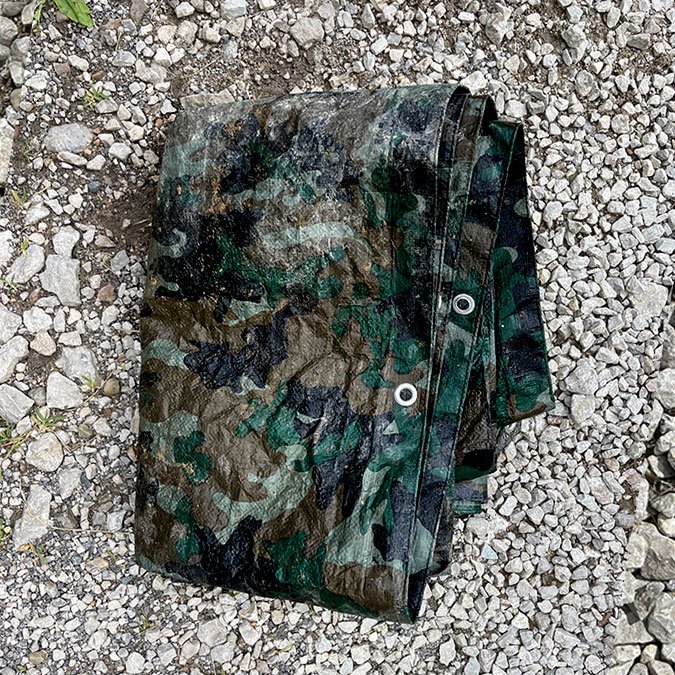
Camouflage Tarp
We wrap the Trail-barrow in camouflage tarp at the end of each day to protect the tools from the elements and keep them out of sight for security. As you'll see from this video, it can come in handy from protecting you from the elements too.

Two 5-Gallon Buckets
We used two buckets for moving dirt and rocks to other areas of the trail where materials are lacking. Why two? It's the most balanced way to carry heavy loads.
Inside the Trail-barrow Box
The plastic bin carries most of the tools and items needed for trail building. Below is an inventory of the tools we took with us.

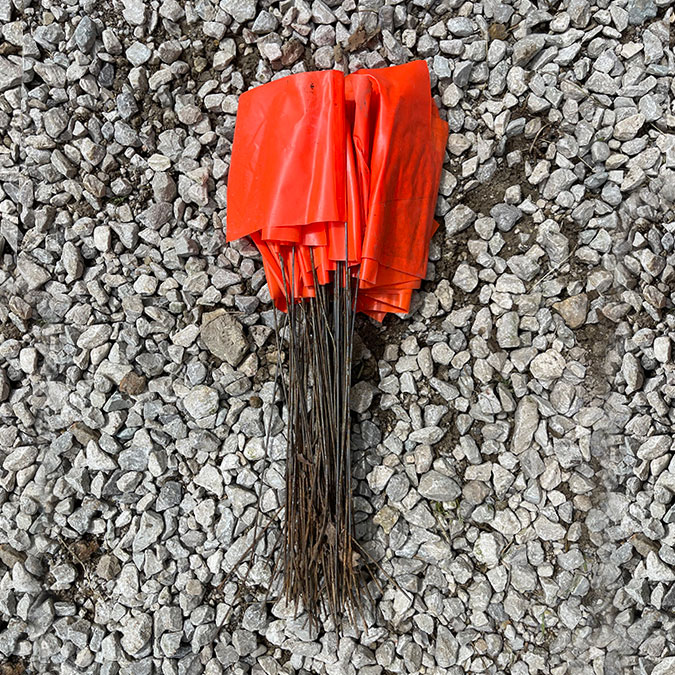
Marking Flags
After the corridor is cleared, we pin out the exact location of the high side of the trail so we can see the flow as it winds through the trees and terrain.
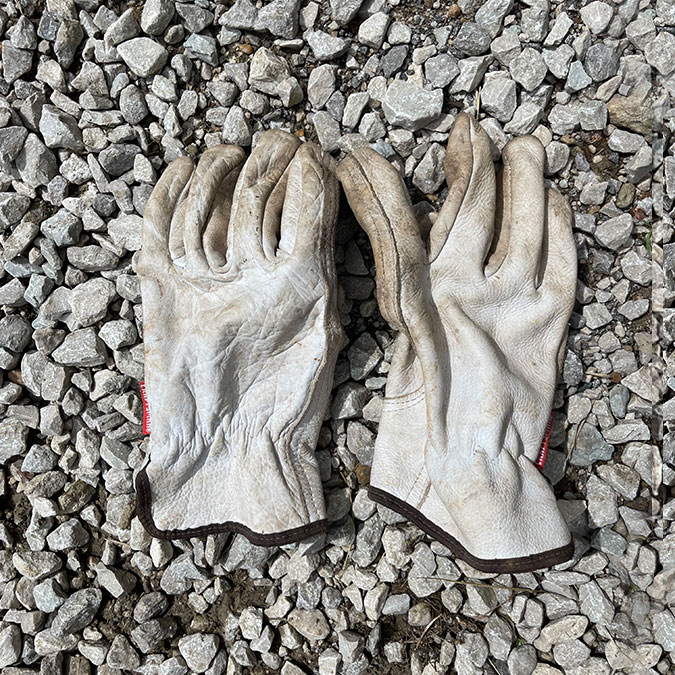
Leather Gloves
We keep extra gloves inside the trail barrow so unprepared volunteers can protect their hands. You'll also find your gloves tear or get wet/muddy, and a fresh pair is always welcome.
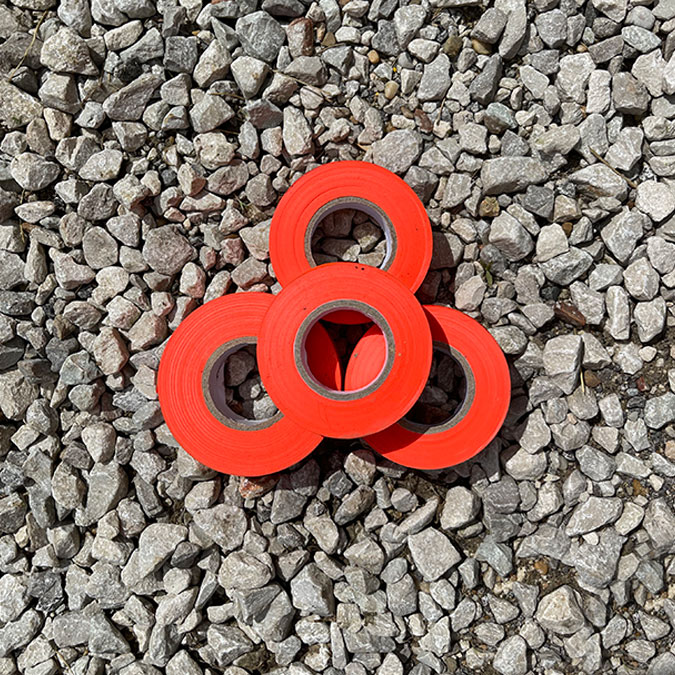
Marking Tape
Always keep marking tape on hand to locate your trail, flag key points of interest, or highlight features you may find so you can keep from losing your place in the forest.
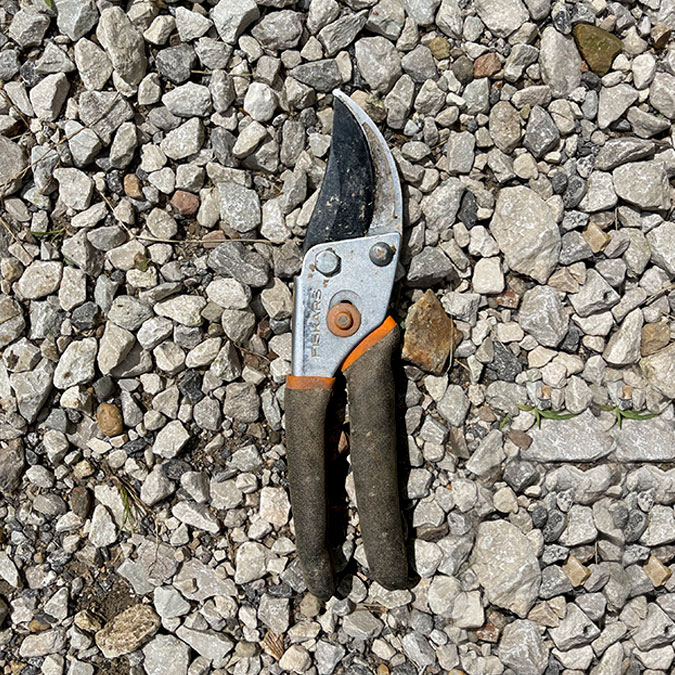
Pruner
These come in handy for finishing off a trail that will be littered with tiny root hairs popping up through the finished (or near-finished) trail bed. They are also helpful for clearing corridors or removing saplings.
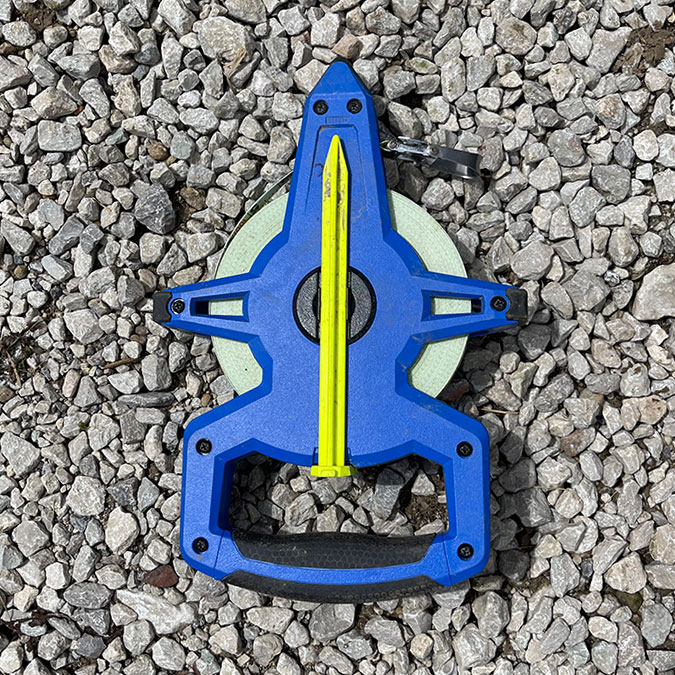
Measuring Tape
A measuring tape is helpful in totaling up the unfinished trail or trail to be finished. It can also be used to measure distances and the amount of material needed for building structural crossings.
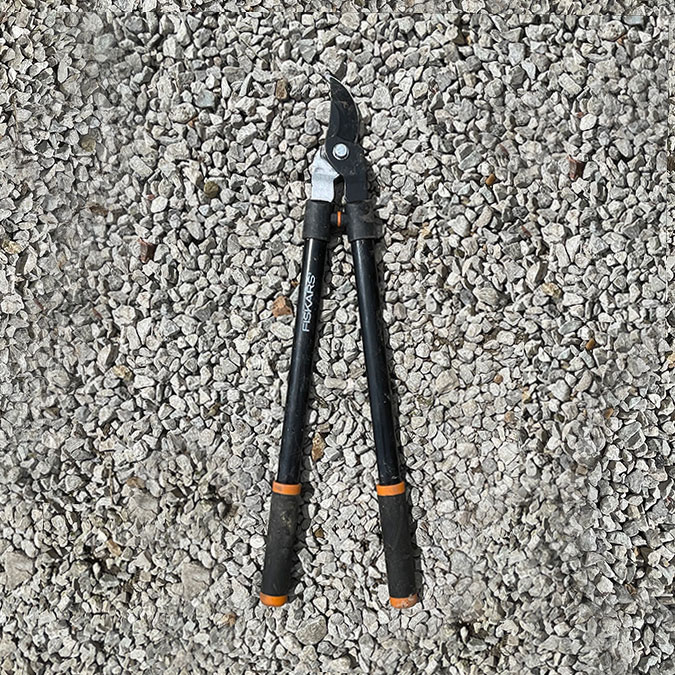
Long-handle Pruner
The extra leverage of the long-handled pruner gives you extra power for clearing corridors where young saplings or overhanging branches might be up to 2 inches in diameter. It can also be helpful when removing stumps.

Hatchet
The hatchet clears limbs and small saplings from the trail corridor. It can also cut through exposed roots.

Folding Saw
It is foldable, compact, lightweight, and cuts limbs and small trees up to 6-8" in diameter. It is excellent for clearing corridor.
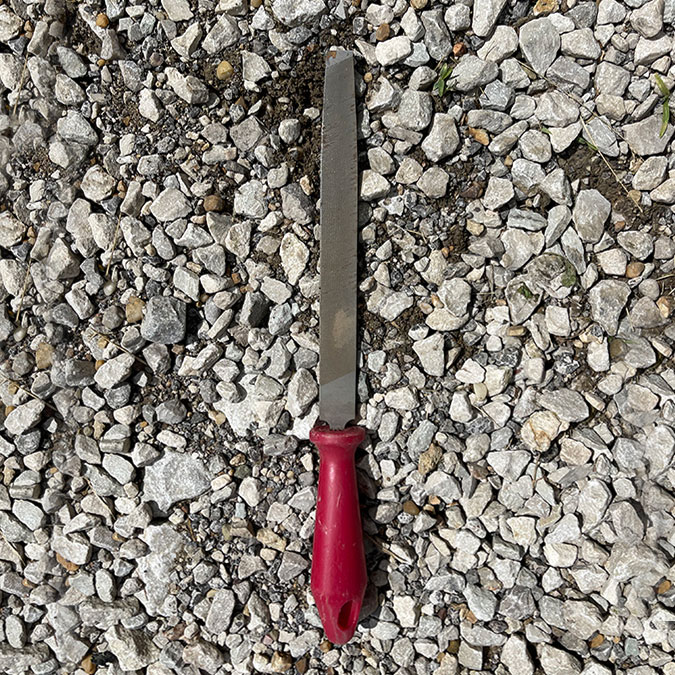
File Sharpener
Sharp tools work better than dull tools and cut trails (and roots) with a fraction of the effort. Hence, a tool file is always on hand.
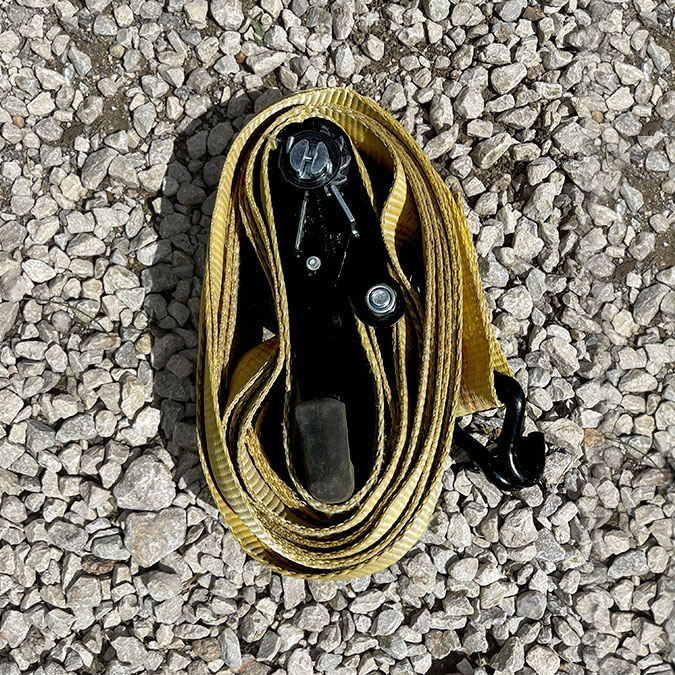
Ratchet Strap
We use a ratchet strap to hold the position or move large rocks. We will also use it to tension trees to cut the roots and taproots more easily.
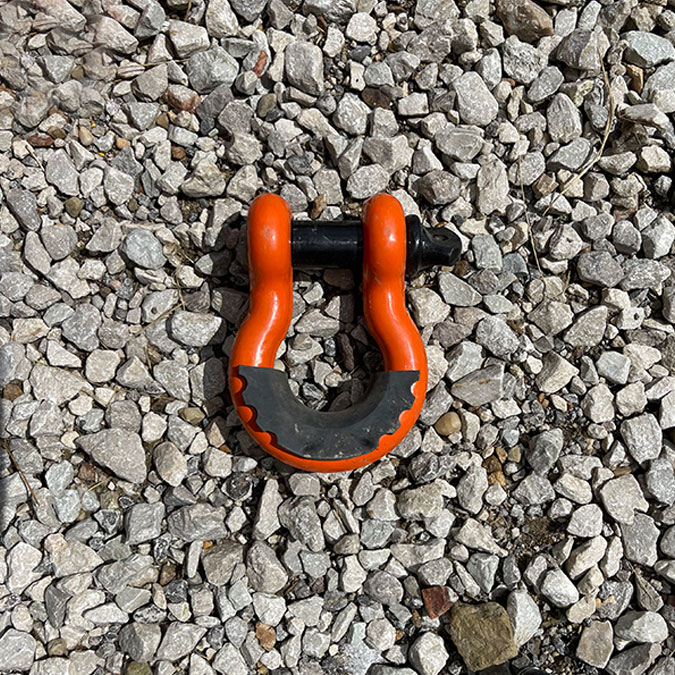
U-bolt
U-bolts are used to connect webbing and ratchet straps for getting creative when leveraging large trees and rocks.

Webbing
Webbing comes in handy when creating and leveraging large objects. They can also be used in conjunction with U-bolts and Ratchet Straps.

Medical Kit
It is good practice to keep a medical kit on hand...just in case.
How Useful Is the Tarp?
Jessie and I got caught in a storm that came out of nowhere. We were working away, and the skies got dark fast. Some quick ingenuity and we were able to rig up a temporary shelter to get out from under the hail.

